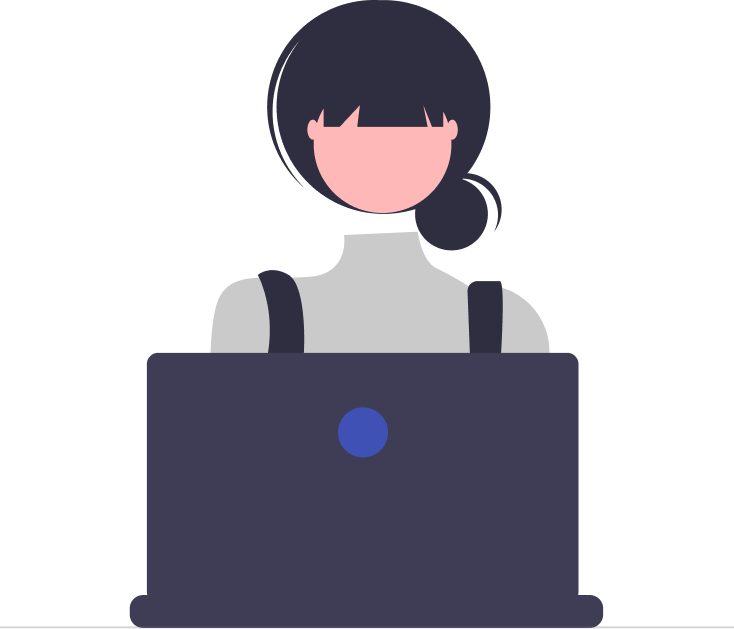
Onboarding new employees is a critical step for companies to maintain productivity and engagement. Microsoft Teams Employee Onboarding App streamlines this process efficiently.
✨
Quick Read
Summary generated by AI, reviewed for accuracy.
The Microsoft Teams Employee Onboarding App streamlines the onboarding process by automating tasks, centralizing communication, and providing interactive training. It enhances engagement, accelerates productivity, and ensures a consistent onboarding experience for new hires.
With seamless integration into Microsoft 365 and customizable workflows, the platform reduces HR workload, improves retention, and provides analytics-driven insights. Companies can transform onboarding into a strategic process that boosts employee satisfaction and long-term performance.
Structured onboarding enhances employee performance and retention. Studies indicate that 69% of employees are more likely to remain with a company for three years when they experience effective onboarding (SHRM, 2023).
Importance of Employee Onboarding
Employee onboarding ensures new hires integrate smoothly into an organization. Proper onboarding reduces confusion, clarifies roles, and accelerates productivity. It sets the tone for a positive employee experience from day one.
- Engagement
Engaged employees are more motivated and confident in their roles. Studies from SHRM indicate that structured onboarding programs significantly boost engagement from day one. A strong onboarding process helps employees feel valued and supported. - Productivity
Structured onboarding helps new hires reach full productivity faster. Clear guidance and training shorten ramp-up time and reduce downtime. Providing tools and resources early ensures employees can contribute effectively sooner. - Retention
Systematic onboarding improves employee retention significantly. Reports from Glassdoor show that well-on-onboarded employees are more likely to stay long-term, reducing turnover costs. Employees who feel prepared are more loyal and committed to the organization. - Culture Integration
Onboarding introduces employees to company values and culture. Cultural alignment increases satisfaction and strengthens team cohesion. Early exposure to culture fosters collaboration and shared purpose across teams. - Compliance & Risk Reduction
Proper onboarding ensures employees understand policies and compliance requirements. Structured programs reduce errors and risks associated with non-compliance. Clear guidelines also protect the company and employees from potential legal issues. - Career Development
Early exposure to growth opportunities and training boosts long-term engagement. Employees are more likely to pursue skill development when onboarding includes clear career pathways. Career-focused onboarding encourages continuous learning and advancement.
Challenges in Traditional Onboarding
Manual onboarding processes often create inefficiencies and mistakes. Common challenges include:
- Paperwork delays
Manual collection of documents can result in errors and lost forms. Using a Microsoft Teams Employee Onboarding App ensures all documents are collected digitally and securely. This reduces delays and minimizes administrative headaches. - Communication gaps
Important announcements or training schedules can be overlooked. Integrating a Microsoft Onboarding App centralizes communication, keeping employees informed and aligned. Clear messaging prevents missed updates and confusion. - Inconsistent training
Lack of standardization leads to uneven knowledge among new employees. A structured onboarding app provides uniform training materials and resources. This ensures every new hire receives the same quality learning experience. - Low accountability
Managers have difficulty tracking task completion. Digital onboarding tools allow supervisors to monitor progress in real time. Employees are held accountable for completing tasks, reducing bottlenecks. - Limited engagement
Employees may feel disconnected during the onboarding period. Interactive features in an onboarding platform foster participation and connection. Engaged employees feel more welcomed and motivated from day one.
These challenges highlight the need for a centralized employee onboarding solution that improves efficiency, consistency, and engagement across the organization.
How Microsoft Teams Employee Onboarding App Solves Onboarding Challenges
Microsoft Teams Employee Onboarding App provides an integrated platform for efficient onboarding. It addresses the challenges by automating tasks, centralizing communication, and tracking progress.
1. Streamlined Onboarding Process
- The app automates document collection and verification, eliminating delays and errors from manual paperwork.
- Step-by-step onboarding checklists guide employees through each task.
- Automated reminders track task completion and keep employees and managers accountable.
- By reducing manual errors by up to 40%, the Microsoft Teams Employee Onboarding App saves HR teams time and ensures new hires start contributing sooner.
2. Centralized Communication
- All communication happens in one place within Microsoft Teams. Chat, announcements, and updates ensure employees receive critical information.
- Automated notifications for deadlines and meetings reduce missed messages or confusion.
- Centralized communication improves clarity and increases engagement by 35%, helping employees feel connected and informed.
3. Interactive Learning and Training
- The app provides interactive modules, quizzes, videos, and other learning materials.
- It tracks training progress and completion for visibility into learning outcomes.
- Gamified elements motivate employees to complete onboarding tasks.
- Interactive onboarding reduces completion time by up to 50%, ensuring employees gain skills quickly while enjoying the process.
4. Manager Oversight and Analytics
- Managers can monitor onboarding progress in real time and identify bottlenecks quickly.
- Reports provide insights into individual and team performance to optimize future processes.
- Analytics-driven onboarding increases productivity by 25%, letting managers focus on coaching instead of administrative follow-ups.
5. Additional Benefits
- The Microsoft Employee Onboarding App supports mobile access, letting employee’s complete tasks anytime.
- It integrates existing HR systems to reduce duplication and ensure consistency.
- Customizable workflows allow organizations to tailor onboarding to their culture, helping every new hire feel welcome.
By combining automation, centralized communication, interactive training, and analytics, the Microsoft Employee Onboarding App transforms onboarding into a strategic process that accelerates engagement, productivity, and retention.
Key Features of the Microsoft Teams Employee Onboarding App
The Microsoft Teams Employee Onboarding App includes comprehensive features designed to streamline onboarding for both HR teams and new employees. These tools ensure consistency, efficiency, and engagement throughout the onboarding journey.
1. Digital Forms
- Collect all HR forms and documentation online, eliminating the need for physical paperwork.
- Employees can complete forms securely and submit them instantly, reducing errors and saving administrative time.
2. Task Automation
- Onboarding tasks can be assigned automatically based on role, department, or location.
- Automated reminders and notifications ensure tasks are completed on time, keeping both employees and managers accountable.
3. Custom Checklists
- Role-specific IT checklists guide new hires through their onboarding process step by step.
- Customizable checklists allow HR teams to tailor workflows for different departments or positions, ensuring every employee gets the right guidance.
4. Training Integration
- Integrates learning management systems (LMS) and training modules directly within Microsoft Teams.
- New hires can access interactive courses, quizzes, and videos without leaving the platform, making training convenient and trackable.
5. Performance Tracking
- Track milestones, task completion, and employee engagement in real time.
- HR and managers can monitor progress, identify bottlenecks, and optimize the onboarding experience for better results.
6. Collaboration Tools
- Built-in chat, video calls, and team channels foster communication and connection.
- New employees can quickly interact with colleagues, ask questions, and feel part of the team from day one.
7. Mobile Accessibility
- Onboarding can be completed from any device, at any time, giving employees flexibility and convenience.
- Mobile access ensures that even remote or field employees stay connected and engaged throughout the onboarding process.
These features combine to create a consistent, efficient, and engaging onboarding experience. By leveraging the microsoft employee onboarding app, organizations can reduce administrative burden, accelerate productivity, and ensure that every new hire feels supported from the very first day.
Benefits of Using Microsoft Teams Employee Onboarding App
Adopting the Microsoft Teams Employee Onboarding App provides measurable benefits that enhance efficiency, engagement, and retention across the organization.
1. Faster Onboarding
- Centralized tasks and automated workflows streamline the entire onboarding journey.
- Companies can reduce onboarding time by up to 60%, allowing new hires to become productive much sooner.
2. Higher Engagement
- Structured tasks, interactive modules, and seamless Teams integration keep employees actively involved.
- Engaged employees adapt faster, feel more connected, and contribute to team success early on.
3. Improved Retention
- A clear, consistent onboarding experience makes new hires feel supported and valued.
- Structured onboarding programs increase retention by 82%, significantly lowering turnover costs.
4. Reduced HR Workload
- Automation eliminates repetitive administrative tasks that consume valuable HR time.
- This allows HR professionals to focus on strategic goals like employee development and experience.
5. Consistency
- Every new hire follows the same standardized onboarding process, regardless of department or location.
- Consistency ensures compliance, clarity, and a unified employee experience across the organization.
6. Analytics-Driven Decisions
- Built-in reports offer visibility into onboarding progress, performance, and engagement trends.
- These insights help HR teams refine onboarding programs, optimize outcomes, and drive continuous improvement.
7. Microsoft 365 Integration
- The app integrates seamlessly with Microsoft 365, connecting Outlook, Teams, and other Microsoft tools.
- This enables task scheduling, meeting coordination, and communication all within a familiar and unified workspace.
Why Microsoft Teams is Ideal for Employee Onboarding
Microsoft Teams is widely adopted across organizations, making it a powerful platform for seamless employee onboarding. Its built-in tools, collaboration features, and secure environment simplify the entire onboarding experience for HR teams and new hires alike.
1. Familiar Interface
- Employees can navigate the platform easily since many already use Teams for daily communication.
- This familiarity reduces the learning curve, helping new hires get comfortable and productive from day one.
2. Integrated Tools
- Teams bring together chat, video calls, file sharing, and apps in one unified space.
- Having everything in one place simplifies coordination, eliminates tool-switching, and streamlines onboarding workflows.
3. Secure Platform
- With enterprise-grade security, Teams ensure that all employee and company data remain protected.
- Advanced compliance features safeguard confidential HR documents and sensitive onboarding information.
4. Remote-Friendly
- Teams support both remote and hybrid work environments, connecting employees regardless of location.
- New hires can access training, meetings, and resources from anywhere, ensuring a consistent onboarding experience.
Using Microsoft Teams for onboarding eliminates the need for new platforms, enabling organizations to deliver a familiar, secure, and integrated experience that accelerates employee engagement and productivity.
Steps to Automate Hiring with Microsoft Teams Employee Onboarding App
Implementing the app involves structured steps:
Step 1: Define Onboarding Goals
- Identify key tasks, compliance requirements, and training modules.
- Set completion timelines.
- Align onboarding with company policies.
Step 2: Customize Onboarding Templates
- Create role-specific checklists.
- Include department-specific documents and training materials.
- Automate task assignments for HR, IT, and managers.
Step 3: Invite Employees to Microsoft Teams
- Send welcome messages with instructions.
- Assign employees to relevant Teams channels.
- Provide access to resources and tools.
Step 4: Track Progress
- Use dashboards to monitor task completion.
- Send reminders for pending tasks.
- Managers address bottlenecks and provide guidance.
Step 5: Collect Feedback
- Employees provide feedback on onboarding experience.
- Identify areas for improvement.
- Use analytics to refine future onboarding programs.
Best Practices for Employee Onboarding in Microsoft Teams
1. Standardize Content
Create consistent onboarding experiences by using templates and structured resources within Teams.
This ensures that every employee receives the same level of information, training, and support.
- Use Microsoft Lists or SharePoint to store standardized documents.
- Keep templates updated with the latest policies and processes.
2. Use Gamification
Motivate new hires through interactive elements like points, badges, or rewards for completing onboarding tasks.
Gamified learning boosts engagement and makes the onboarding process enjoyable.
- Integrate quizzes and milestone achievements within Teams channels.
- Recognize top performers through leaderboard announcements.
3. Maintain Communication
Consistent communication builds trust and clarity during the onboarding journey.
Use Teams channels and announcements to keep new hires informed and connected.
- Schedule weekly check-ins through Teams meetings.
- Encourage open Q&A sessions to resolve doubts quickly.
4. Monitor Progress
Regularly track onboarding task completion and address bottlenecks proactively.
Real-time progress tracking helps HR and managers ensure timely completion of activities.
- Use Power BI or built-in Teams dashboards for progress insights.
- Automate reminders for pending tasks or overdue checklists.
5. Continuous Improvement
Gather feedback and analytics to refine the onboarding process over time.
Data-driven improvements help enhance employee satisfaction and efficiency.
- Use Microsoft Forms to collect feedback after onboarding.
- Review analytics from the Microsoft Onboarding App to identify gaps.
Following these best practices ensures onboarding efficiency, engagement, and long-term employee success within Microsoft Teams.
Common Features to Look for in Employee Onboarding Tools
When evaluating employee onboarding software or HR onboarding tools, it’s essential to focus on functionality, integration, and ease of use. These features ensure a smooth and efficient onboarding journey for both HR and employees.
1. Automation Capabilities
- Automation eliminates repetitive manual tasks by assigning activities, sending reminders, and processing digital forms.
- This not only saves time but also ensures no step in the onboarding process is overlooked.
- It also enhances accuracy and compliance by ensuring every document and task is completed on time across onboarding and employee offboarding

2. Reporting & Analytics
- Advanced reporting provides real-time visibility into onboarding progress, completion rates, and employee engagement.
- Analytics empower HR teams to make data-driven decisions and continuously refine onboarding strategies.
- With actionable insights, HR leaders can identify patterns, compare results, and improve overall workforce retention.
3. Mobile Access
- A mobile-friendly platform enables employees to complete onboarding tasks anytime, anywhere.
- This feature supports remote and hybrid teams, ensuring flexibility and accessibility.
- Mobile-enabled platforms enhance employee experience by providing instant access to checklists, learning, and communication tools.
4. User Experience
- An intuitive interface helps HR professionals, and new hires navigate the system effortlessly.
- A clean design and clear instructions reduce confusion and boost engagement.
- An engaging interface creates a positive first impression and ensures consistency throughout the employee lifecycle.
5. Customization
- Customizable templates, workflows, and checklists allow HR teams to tailor onboarding to specific roles or departments.
- This personalization enhances relevance and ensures a consistent, yet flexible experience.
- Tailored platforms adapt easily to company policies, compliance requirements, and evolving business needs.
Metrics to Measure Onboarding Success
Tracking the right metrics helps organizations evaluate the true effectiveness of their onboarding programs and identify areas for improvement.
Time to Productivity reflects how long it takes for a new employee to achieve optimal performance in their role. A shorter time frame indicates efficient training, clear guidance, and proper resource allocation. This metric is optimized using Onboarding Automation Tools, helping HR teams accelerate ramp-up time and reduce downtime.
Task Completion Rate measures how many onboarding tasks are completed on time across departments. A high completion rate signifies strong process adherence and clear communication between HR, managers, and new hires. Automation ensures tasks are completed efficiently without delays.
Employee Retention focuses on the percentage of new hires who stay with the organization beyond their first year. Effective onboarding directly impacts retention by creating a positive first experience and setting clear expectations. This can be tracked using remote employee onboarding tools to monitor engagement and commitment.
Engagement Scores reveal how satisfied and connected employees feel during and after onboarding. High engagement indicates that new hires understand their roles, feel supported, and are motivated to perform. Real-time feedback and interactive surveys improve overall onboarding satisfaction.
Training Completion tracks how many employees finish all required training modules within the given timeline. A high completion rate reflects accessible learning materials, interactive modules, and active manager involvement. Using new hire success metrics helps HR teams evaluate training effectiveness and overall onboarding outcomes.
By regularly monitoring these metrics, organizations can continuously refine their onboarding strategy, ensuring better integration, higher productivity, and a stronger overall employee experience.
Integrating Onboarding Software with Microsoft Teams
Effective integration with Microsoft Teams significantly enhances employee onboarding experience, improving engagement, efficiency, and task tracking across the organization.
Centralized Communication
- Use Teams channels to share announcements, updates, and important information with new hires.
- Centralized communication ensures that employees always know where to find resources and messages.
- This approach strengthens your onboarding program by keeping all stakeholders aligned and informed from day one.
Document Management
- Store HR forms, policies, and other important documents directly in Teams for easy access.
- Employees can view, download, or submit documents without switching platforms, reducing confusion and errors.
- A centralized document hub improves organization, accessibility, and compliance during the onboarding process.
Training Modules
- Embed LMS courses, training videos, and interactive learning content directly within Teams.
- Employees can complete the required training without leaving the platform, saving time, and increasing completion rates.
- This integration works seamlessly with SaaS onboarding software, providing a modern and scalable learning experience.
Automated Alerts
- Set reminders for pending tasks, upcoming deadlines, or scheduled meetings to keep new hires on track.
- Automation reduces the risk of missed activities and ensures employees complete onboarding efficiently.
- Timely alerts also allow managers to intervene when necessary, maintaining accountability throughout the process.
Integration with Microsoft Teams simplifies the onboarding workflow, improves collaboration, and ensures consistency across all steps of the employee journey, making your onboarding process more structured and effective.
Conclusion
The Microsoft Teams Employee Onboarding App transforms onboarding into a seamless, engaging, and efficient process. By combining automation, centralized communication, interactive training, analytics, and integration with Microsoft 365, organizations can accelerate productivity, boost employee engagement, and improve retention. Leveraging this platform ensures a consistent, structured, and measurable onboarding experience that aligns with your HR goals and company culture.
Take the first step toward smarter onboarding and a more productive workforce.
Join Our Creative Community
Frequently Asked Questions
How does the Microsoft Teams Employee Onboarding App improve onboarding efficiency?
The Microsoft Teams Employee Onboarding App streamlines the onboarding process by automating tasks, centralizing communication, and tracking employee progress, ensuring a faster and more structured onboarding experience.
What is the Microsoft Onboarding App and how can it help new hires?
The Microsoft Onboarding App provides a digital platform for collecting documents, delivering training, and monitoring progress, helping new hires get up to speed quickly and effectively.
How can I use a Microsoft Teams onboarding template for my HR process?
A Microsoft Teams onboarding template allows HR teams to standardize workflows, assign tasks, and provide consistent training to all new employees, saving time and reducing errors.
Which features make it the best employee onboarding software for organizations?
The best employee onboarding software includes task automation, interactive training modules, analytics, and integrations with tools like Microsoft Teams, ensuring a seamless onboarding experience.
What are the benefits of Microsoft Teams new employee onboarding for remote teams?
Microsoft Teams new employee onboarding supports remote employees by providing centralized communication, virtual training, and real-time progress tracking, fostering engagement and productivity from anywhere.


_mVFFaHUZhS.webp)


_JiluXJRGNl.svg)



















